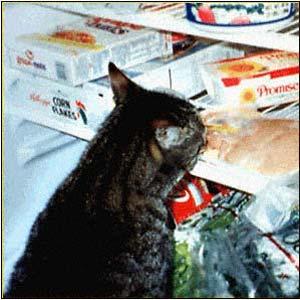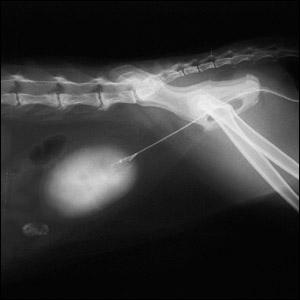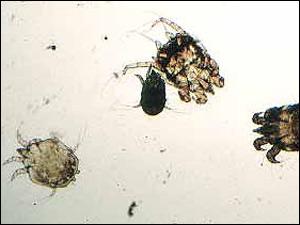
Cats
Pruritus, the medical term for itching or scratching, is an unpleasant sensation that causes a cat to scratch or bite at himself. It is caused by chemical reactions that occur in the skin and stimulate the nerves, causing the brain to feel the itch. In fact, the act of scratching itself may stimulate these inflammatory reactions in the skin and make the condition worse. Any skin condition that causes inflammation can cause pruritus.
Below is an brief overview of Pruritus (Itchiness) in Cats followed by detailed information on the diagnosis and treatment of this condition.
How pruritis affects your cat's health depends on the degree of the pruritus. Mild pruritus may hardly have any effect at all. However, severe pruritis leads to intense scratching, which may result in painful skin lesions that may become infected.
Every cat has a threshold of pruritis or an "itch threshold." This is the point where all of the sources of itching finally add up to enough irritation to cause the irresistible urge to scratch. Scratching begins when the stimulation exceeds that threshold. For example, a cat with a mild allergy to house dust mites may be below the threshold but may begin to scratch severely when he becomes infested with fleas.
Pruritus is associated with other skin diseases, including secondary bacterial skin infections (pyoderma) and secondary yeast infections. But it is the main symptom of skin conditions like allergies and skin parasites.
At home your care will be aimed at preventing pruritis by keeping your cat's coat clean and brushed free of mats. Consult with your veterinarian to establish a complete flea control program. If your cat is being treated for pruritis, administer all prescribed medication and follow all your veterinarian's instructions.
 5 Important Things To Do For Cat Hairball Prevention
Hairba
5 Important Things To Do For Cat Hairball Prevention
Hairba
 Acute Diarrhea in Cats
Acute Diarrhea in Cats
Acute Diarrhea in Cats
Acute Diarrhea in Cats
 Patience, Pet Insurance And Other Secrets Of Moving Your Cats In With Other Cats
In tay rolle coaster economy, a lot of people cannot easily
Patience, Pet Insurance And Other Secrets Of Moving Your Cats In With Other Cats
In tay rolle coaster economy, a lot of people cannot easily
 Dysuria (Trouble Urinating) in Cats
Dysuria (Trouble Urinating) in Cats
Dysuria (Trouble Urinating) in Cats
Dysuria (Trouble Urinating) in Cats
 Pruritus (Itchiness) in Cats
Pruritus (Itchiness) in Cats
Pruritus (Itchiness) in Cats
Pruritus (Itchiness) in Cats
Copyright © 2005-2016 Pet Information All Rights Reserved
Contact us: www162date@outlook.com